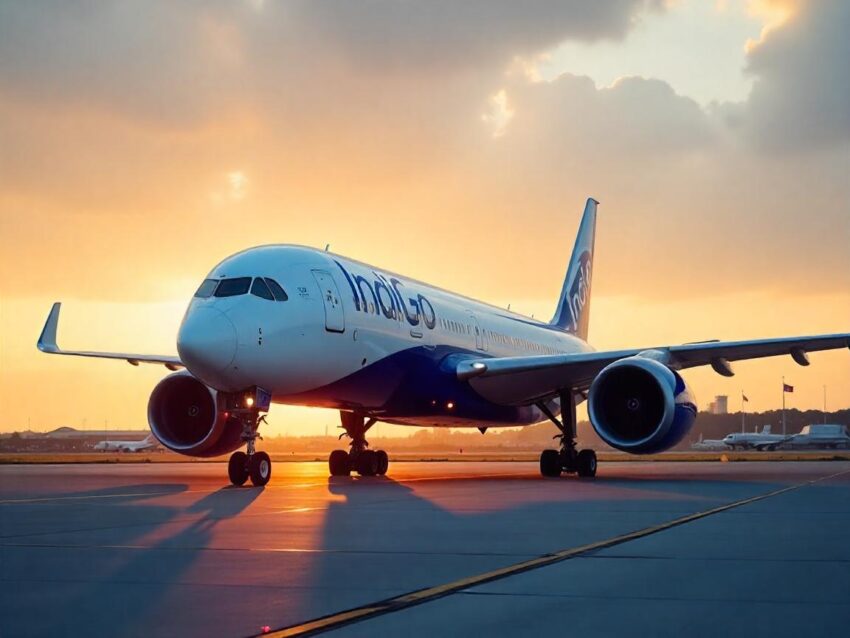United Airlines Joins with American, Delta, Frontier, Hawaiian in Delivering Airbus Orders, Electrifying Future of US Air Travel
Thursday, June 5, 2025

In a bold and electrifying twist, United Airlines has officially joined forces with American, Delta, Frontier, and Hawaiian in delivering massive Airbus orders—a move that promises to transform the future of US air travel. This isn’t just about adding jets. It’s about rewriting the rules of the sky.
While travelers may not notice at first glance, these orders quietly signal a race toward innovation. One where United, like American and Delta, is playing to win. Frontier and Hawaiian aren’t far behind either. The lineup of major carriers choosing Airbus reveals something bigger. A shift. A vision. A bold bet on the skies of tomorrow.
Meanwhile, with each deal inked, suspense builds. What’s driving this sudden Airbus momentum? Why are U.S. airlines pivoting now? And what does it mean for your next flight? The answers might surprise you—and they’re about to redefine the way America flies.
In a strategic move that escaped public fanfare but sent waves through the aviation industry, United Airlines has confirmed a silent order for 40 Airbus A321neo aircraft, destined for delivery after 2030. This major acquisition, initially shrouded under Airbus’s “undisclosed customer” in the March 2025 Orders and Deliveries report, marks a critical shift in fleet planning—and a subtle yet significant departure from Boeing’s uncertain certification trajectory.
The aircraft order, finalized on March 10, positions United to aggressively modernize its narrowbody operations. But this isn’t just a fleet expansion—it’s a recalibration of trust, agility, and long-term resilience. At a time when global carriers are racing to regain stability post-pandemic and amid , United’s decision resonates far beyond the tarmac.
The A321neo family offers extended range, improved fuel efficiency, and reduced emissions. It’s quickly becoming the aircraft of choice for carriers looking to balance capacity with sustainability. , despite being traditionally aligned with Boeing’s portfolio.
This move didn’t come out of nowhere. In 2024, United had already hinted at dissatisfaction with , raising questions about the reliability of future certifications. While public statements grew more optimistic over time, this Airbus order reveals a pragmatic fallback plan—one that doesn’t rely solely on faith in Boeing’s timeline.
Moreover, this commitment to Airbus isn’t limited to direct purchases. United has also , with deliveries beginning as early as 2026. These combined efforts show that the airline is playing the long game, ensuring flexibility and preparedness for unforeseen disruptions.
For the travel and tourism industry, United’s pivot signals a powerful new direction. The A321neo’s range and performance could enable more direct flights between underserved secondary cities—reducing the need for complex layovers and cutting travel time for millions.
This has immediate implications for regional airports, hotel partners, and tourism boards. More A321neos mean may soon emerge between the U.S. and mid-tier cities across Europe and South America. The result? More tourist inflow to smaller cities, diversified tourism spending, and increased competition across hospitality and ground transportation sectors.
Tourism authorities should take note—this aircraft fleet change could become a trigger for post-2030. Airports in growth-phase markets should prepare for a fresh wave of high-capacity, long-range single-aisle jet traffic.
This new order follows a . Back in October 2023, United added 60 A321neos to its pipeline. Combined with previous orders for 70 A321neos and 50 long-range A321XLRs, the carrier’s Airbus backlog now stands at .
For context, United currently operates , representing just a fraction—around 20%—of its active Airbus narrowbody fleet. The new additions will rapidly tilt the balance toward Airbus over the next decade.
Because airline fleets directly affect fare pricing, route accessibility, and passenger comfort. The A321neo’s quieter cabin, lower emissions, and longer reach will likely elevate the onboard experience while aligning with eco-conscious travel trends.
At its core, this is a story of . United isn’t cutting ties with Boeing—but it’s also no longer waiting idly. With uncertainty still looming over the Boeing 737-10’s FAA certification, United made a choice: .
The order enables United to stay agile, ready to increase capacity or adjust to global market shifts. Meanwhile, its leasing arrangement ensures that immediate capacity gaps can be filled while it waits for its long-term assets to arrive post-2030.
This dual-track procurement strategy—buy and lease—reflects a growing trend in the industry: .
United’s massive Airbus order puts pressure on other legacy U.S. carriers to . American Airlines and Delta have already moved forward with Airbus commitments, but United’s growing Airbus dominance, both in volume and variety, makes it a case study in diversified strategy.
And for Boeing? This might be the wake-up call it needs to fast-track certification, improve customer transparency, and rethink production bottlenecks.
As we approach the second half of the decade, all eyes will be on how these decisions unfold. United’s fleet transformation isn’t just a corporate logistics matter—it’s a in the global travel matrix.
By 2030 and beyond, passengers flying United will likely see operating on routes that once relied on older models. The A321neo’s performance could lead to:
For frequent flyers, travel agencies, and tourism planners, the message is clear: United is modernizing with intent—and its passengers will feel the difference.
A silent yet powerful revolution is taking place in the skies—and on the ground, airline executives are making strategic moves that could redefine how Americans fly. At the heart of this transformation is a single aircraft model: the . With its fuel efficiency, lower emissions, and impressive range, this next-generation jet is quickly becoming the workhorse of the .
From coast to coast, U.S.-based carriers are placing massive orders, quietly reshaping not only their fleets but also the way travelers will experience air travel for decades to come.
In an era where sustainability and cost-efficiency go hand-in-hand, the Airbus A321neo offers exactly what airlines need: reduced fuel burn, lower operating costs, and a longer range that allows for flexible route planning. It’s a single-aisle aircraft with the heart of a widebody—capable of flying longer routes, while being economical on shorter ones.
That kind of versatility is a game-changer.
Add to that the global delays in aircraft certification—especially from Boeing’s side—and it’s no wonder that U.S. airlines are quietly hedging their bets with Airbus.
In one of the more strategic moves of 2025, quietly confirmed a new order for aircraft. While the transaction was initially hidden under the “undisclosed customer” label in Airbus’s March delivery report, the confirmation sent strong signals to the aviation market: United is thinking beyond Boeing.
This order, scheduled for delivery after , supplements the carrier’s previous Airbus orders, including 60 A321neos announced in 2023, and makes United one of the biggest future operators of the aircraft type. Combined with ongoing leasing agreements, United is preparing for a long-term pivot that ensures , and .
isn’t just investing—it’s dominating. In March 2024, American placed an order for , bringing its total commitment to . That’s the largest among U.S. carriers to date. With these additions, American is signaling its intent to make the A321neo the backbone of its narrowbody operations.
This aggressive fleet refresh will likely allow American to enhance domestic travel efficiency while also that were previously unprofitable or underserved. The A321neo’s fuel savings and performance edge mean more direct flights with fewer stopovers—something travelers are increasingly demanding in the post-pandemic era.
has taken a more measured, yet equally impactful approach. The airline has committed to , with deliveries expected through 2027. These jets will replace aging Boeing 757s and older A320 family aircraft.
Delta’s focus is clear: improve passenger experience while minimizing environmental impact. Each A321neo can reduce CO₂ emissions by 20% and offers quieter cabins—features that align with Delta’s push for sustainability and premium customer service. These new aircraft will play a key role in .
While the big three dominate the headlines, are also betting big on the A321neo.
, while deferring deliveries of until 2030 and beyond, still holds substantial interest in the aircraft for future expansion. As JetBlue eyes international growth and deeper market penetration in North America, these planes will be critical to its plans.
has a staggering , cementing its commitment to an all-Airbus fleet. The carrier’s low-cost model thrives on fuel efficiency, and the A321neo delivers it in spades.
hasn’t publicly detailed its full order numbers, but it’s known to be incorporating the A321neo into its growing fleet. These new jets will help Spirit cut costs and emissions while expanding its ultra-low-cost network to new destinations.
Even outside the continental U.S., the A321neo is leaving its mark. operates , using them to serve inter-island and West Coast routes. The aircraft’s range makes it ideal for connecting Hawaii to California, Las Vegas, and the Pacific Northwest without the excess fuel costs of larger jets.
This allows Hawaiian Airlines to maintain competitive fares while offering across the Pacific.
For passengers, this sweeping adoption of the A321neo means one thing: .
Expect quieter cabins, smoother rides, more efficient boarding, and potentially more direct routes between cities you once had to connect through. Airports that were previously underutilized may become new hubs. Travelers can look forward to , even from secondary cities.
The A321neo also supports a more sustainable travel experience. With a 20% drop in emissions and reduced noise pollution, it appeals to the growing number of travelers who want their journeys to align with their environmental values.
As United, Delta, American, and others gear up for the next decade, the Airbus A321neo stands at the center of a U.S. airline transformation. It’s a shift away from legacy inefficiencies and toward flexible, fuel-efficient, and future-ready fleets.
Quietly but surely, this aircraft is becoming the unsung hero of post-pandemic aviation—a jet that’s not just changing how airlines fly, but also how passengers experience the world.
The skies are changing. And the A321neo is leading the charge.
United Airlines’ silent yet seismic order of 40 Airbus A321neos is more than a purchase—it’s a prediction. It forecasts a post-2030 travel world powered by efficient aircraft, diversified fleets, and calculated flexibility. While it flew under the radar, this order will soon redefine travel routes, reshape tourism dynamics, and redraw the competitive lines in U.S. aviation.
For the travel industry, this isn’t just airline news—it’s a signal to prepare for a new era. One where fleet agility is king, and bold decisions today define global movement tomorrow.
Tags: A321neo, air travel trends, Airbus, aircraft orders, airline strategy, American Airlines, Asia, Australia, Boeing, Chicago, delta air lines, Europe, fleet renewal, frontier airlines, global aviation, hawaiian airlines, JetBlue, latin america, Spirit Airlines, sustainable aviation, Tourism Trends, travel disruptions, travel industry, Travel News, United Airlines, United States











